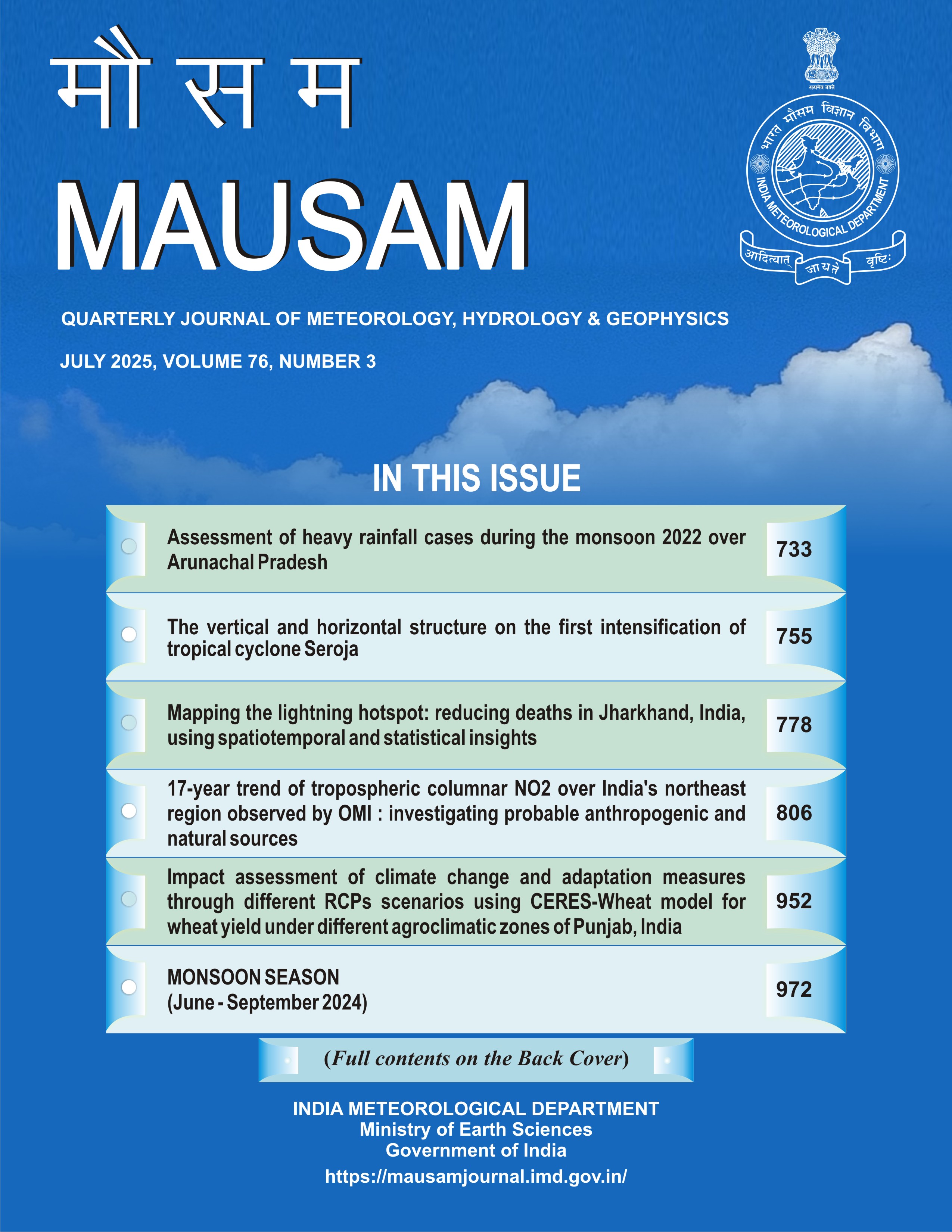17-year trend of tropospheric columnar NO2 over India's northeast region observed by OMI : investigating probable anthropogenic and natural sources
DOI:
https://doi.org/10.54302/mausam.v76i3.6635Abstract
This study presents a comprehensive analysis of Tropospheric Columnar NO2 (TCN) concentrations spanning 17 years (2005-2022) in the Northeastern Region of India (NERI). Remote sensing data from the Ozone Monitoring Instrument (OMI) aboard the Aura satellite was utilized in analyzing the spatiotemporal patterns of nitrogen dioxide (NO2) concentrations within the region. NO2 is a prominent atmospheric pollutant that emerges from diverse sources like industrial emissions, vehicle combustion, biomass burning, and natural processes such as lightning and soil emissions. The varying levels of NO2 pollution in the NERI, with its distinctive topography and meteorological behaviors, may be attributed to urbanization, population growth, and energy utilization. TCN concentrations peak during pre-monsoon and winter months, driven primarily by factors like biomass burning and anthropogenic activities. Long-term data reveals an overall TCN increase, reflecting growing influences from rising vehicles, industrial expansion, and population density. Monthly variations indicate the significance of the pre-monsoon season, characterized by elevated NO2 levels influenced by lightning and transported NO2. Forest fires, biomass burning, and combustion engines contribute as major sources of both natural and anthropogenic NO2. Frequency distribution analysis results exhibit varying air quality statuses across NERI states, emphasizing the need for targeted interventions in regions consistently experiencing high TCN levels. Furthermore, the study assesses the impact of the COVID-19 pandemic, identifying fluctuations in NO2 concentrations during lockdowns in pre-monsoon seasons. This research emphasizes the requirement for strong monitoring and mitigation strategies to combat increasing NO2 pollution in the NERI, addressing air quality and broader environmental health issues, necessitating well-informed measures for healthier living conditions.
Downloads
Published
How to Cite
Issue
Section
License
Copyright (c) 2025 MAUSAM

This work is licensed under a Creative Commons Attribution-NonCommercial 4.0 International License.
All articles published by MAUSAM are licensed under the Creative Commons Attribution 4.0 International License. This permits anyone.
Anyone is free:
- To Share - to copy, distribute and transmit the work
- To Remix - to adapt the work.
Under the following conditions:
- Share - copy and redistribute the material in any medium or format
- Adapt - remix, transform, and build upon the material for any purpose, even
commercially.



